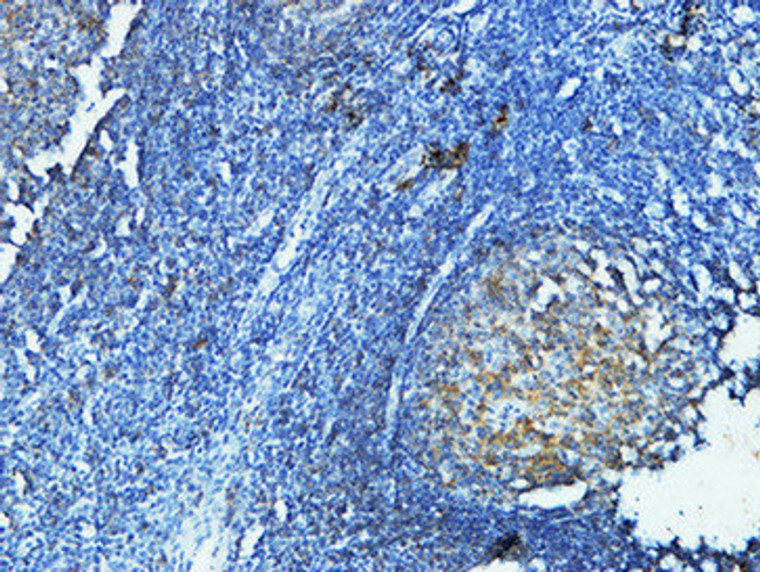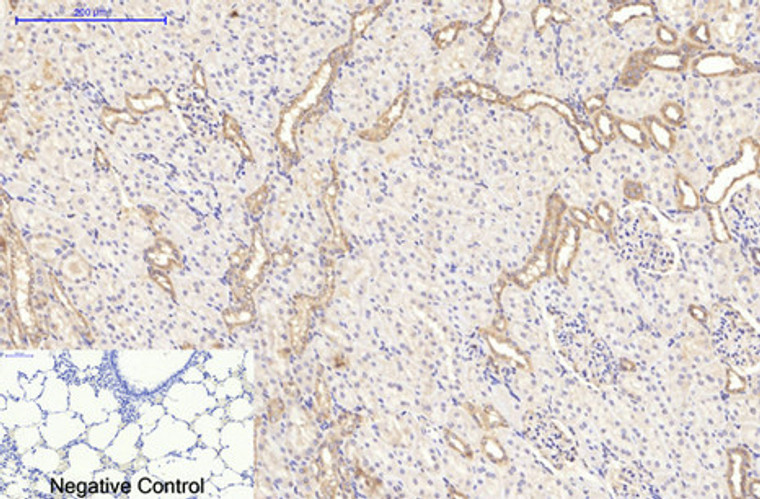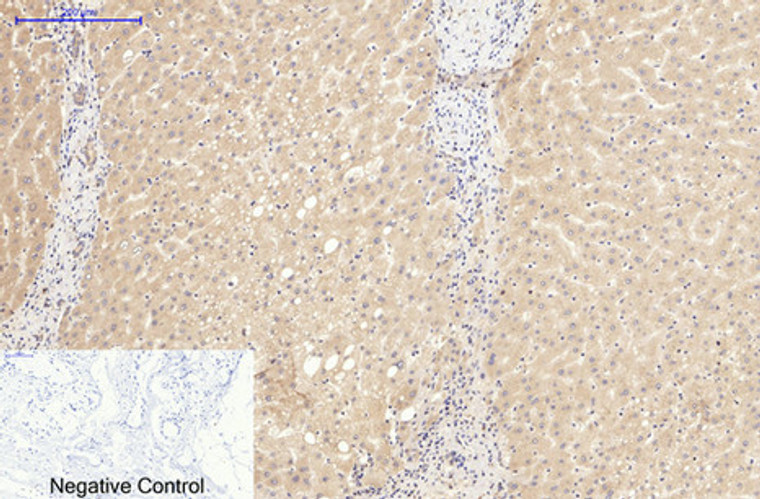-
Immunohistochemical analysis of paraffin-embedded Human Amygdala. 1, Antibody was diluted at 1:400 (4°C overnight). 2, High-pressure and temperature EDTA, pH8.0 was used for antigen retrieval. 3, Secondary antibody was diluted at 1:200 (room temperature, 30min).
-
Immunohistochemical analysis of paraffin-embedded Human Amygdala. 1, Antibody was diluted at 1:400 (4°C overnight). 2, High-pressure and temperature EDTA, pH8.0 was used for antigen retrieval. 3, Secondary antibody was diluted at 1:200 (room temperature, 30min).
-
Immunohistochemical analysis of paraffin-embedded Human Amygdala. 1, Antibody was diluted at 1:400 (4°C overnight). 2, High-pressure and temperature EDTA, pH8.0 was used for antigen retrieval. 3, Secondary antibody was diluted at 1:200 (room temperature, 30min).
-
Immunohistochemical analysis of paraffin-embedded Human Amygdala. 1, Antibody was diluted at 1:200 (4°C overnight). 2, High-pressure and temperature EDTA, pH8.0 was used for antigen retrieval. 3, Secondary antibody was diluted at 1:200 (room temperature, 30min).
-
Immunohistochemical analysis of paraffin-embedded Human Amygdala. 1, Antibody was diluted at 1:200 (4°C overnight). 2, High-pressure and temperature EDTA, pH8.0 was used for antigen retrieval. 3, Secondary antibody was diluted at 1:200 (room temperature, 30min).
-
Immunohistochemical analysis of paraffin-embedded Human Amygdala. 1, Antibody was diluted at 1:100 (4°C overnight). 2, High-pressure and temperature EDTA, pH8.0 was used for antigen retrieval. 3, Secondary antibody was diluted at 1:200 (room temperature, 30min).
-
Immunohistochemical analysis of paraffin-embedded Human Amygdala. 1, Antibody was diluted at 1:200 (4°C overnight). 2, High-pressure and temperature EDTA, pH8.0 was used for antigen retrieval. 3, Secondary antibody was diluted at 1:200 (room temperature, 30min).
-
Immunohistochemical analysis of paraffin-embedded Human Amygdala. 1, Antibody was diluted at 1:100 (4°C overnight). 2, High-pressure and temperature EDTA, pH8.0 was used for antigen retrieval. 3, Secondary antibody was diluted at 1:200 (room temperature, 30min).
-
Immunohistochemical analysis of paraffin-embedded Human Amygdala. 1, Antibody was diluted at 1:100 (4°C overnight). 2, High-pressure and temperature EDTA, pH8.0 was used for antigen retrieval. 3, Secondary antibody was diluted at 1:200 (room temperature, 30min).
-
IHC staining of Human tonsil tissue paraffin-embedded, diluted at 1:200.
-
Immunohistochemical analysis of paraffin-embedded Rat-lung tissue. 1, CD20 monoclonal antibody (2F4) was diluted at 1:200 (4°C, overnight). 2, Sodium citrate pH 6.0 was used for antibody retrieval (>98°C, 20min). 3, Secondary antibody was diluted at 1:200 (room tempeRature, 30min). Negative control was used by secondary antibody only.
-
Immunohistochemical analysis of paraffin-embedded Human-breast tissue. 1, CD20 monoclonal antibody (2F4) was diluted at 1:200 (4°C, overnight). 2, Sodium citrate pH 6.0 was used for antibody retrieval (>98°C, 20min). 3, Secondary antibody was diluted at 1:200 (room tempeRature, 30min). Negative control was used by secondary antibody only.
















![Anti-MS4A1 antibody (100-200) [S5MR] (STJ11102185) Anti-MS4A1 antibody (100-200) [S5MR] (STJ11102185)](https://cdn11.bigcommerce.com/s-zso2xnchw9/images/stencil/300x300/products/91102/362020/STJ11102185_1__74360.1713126987.jpg?c=1)